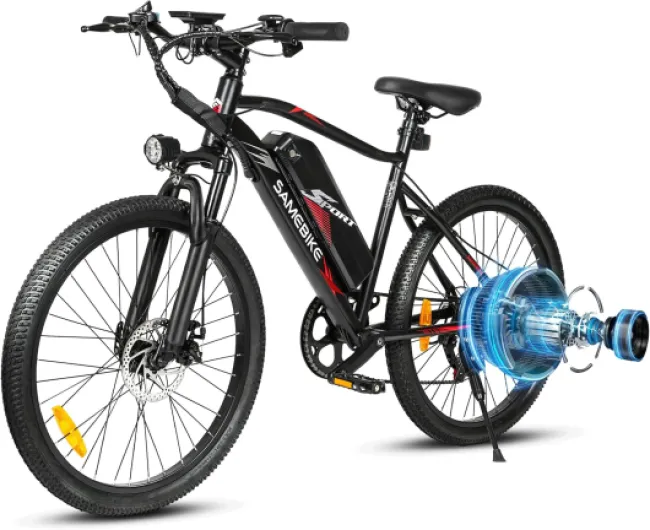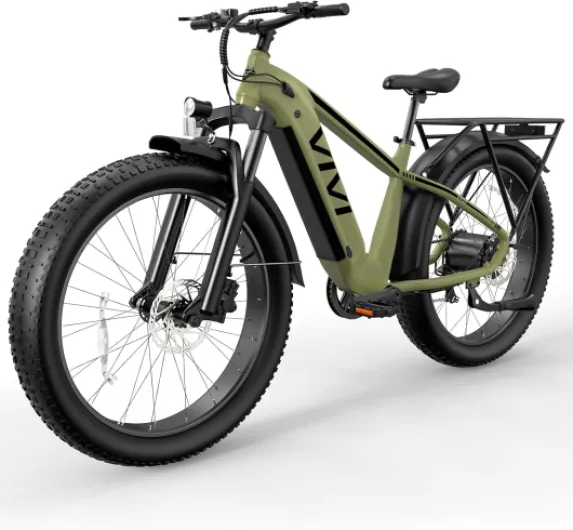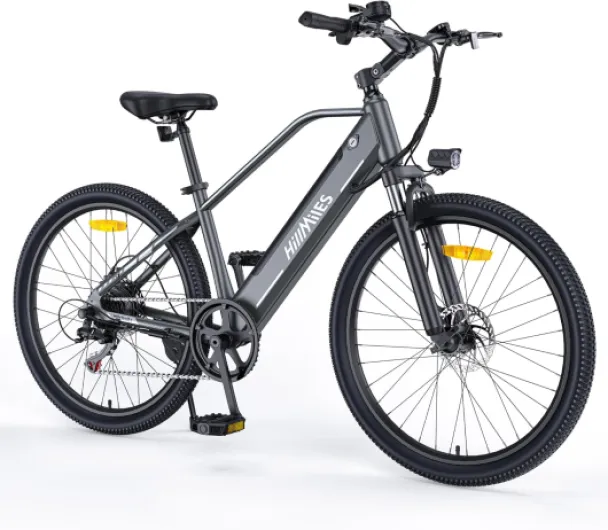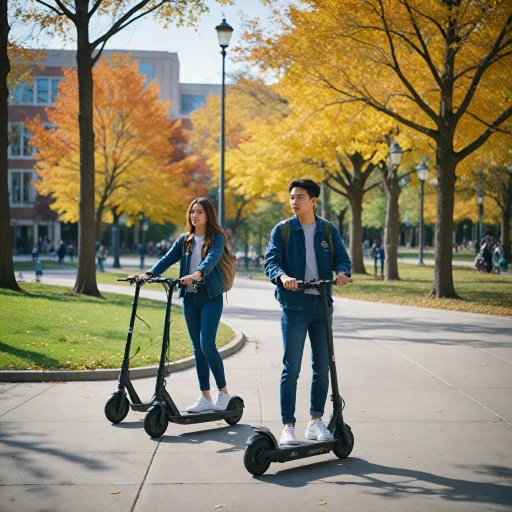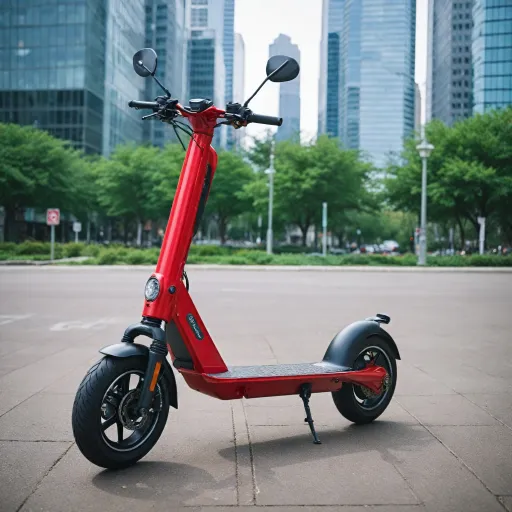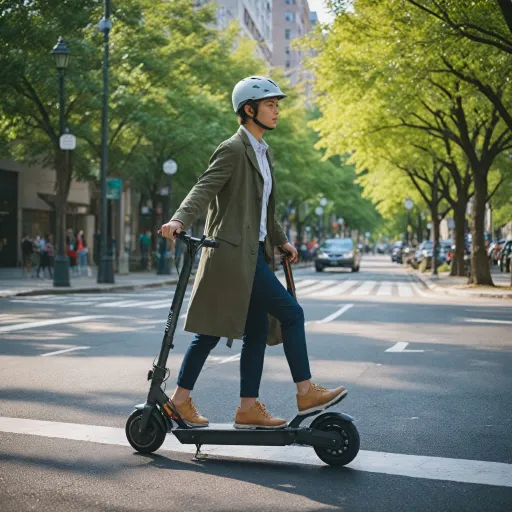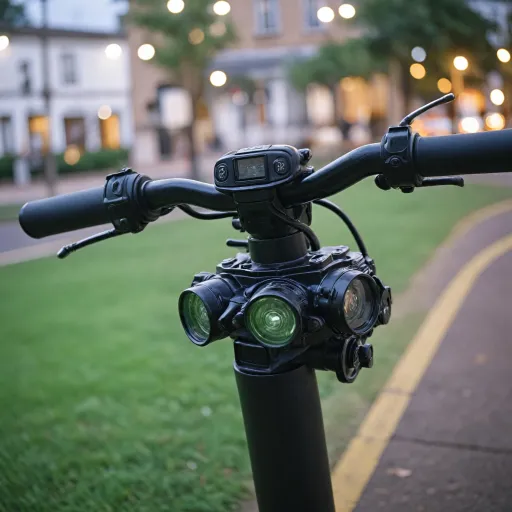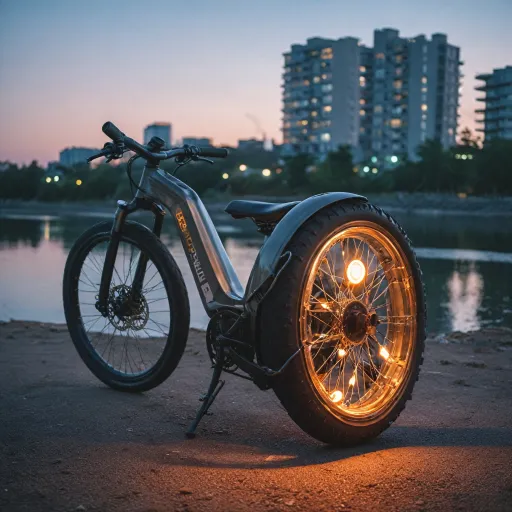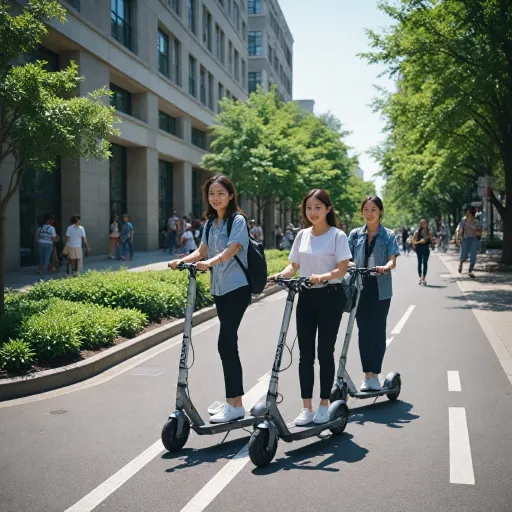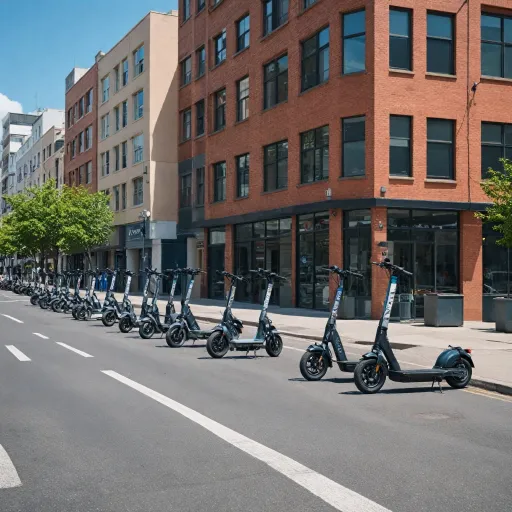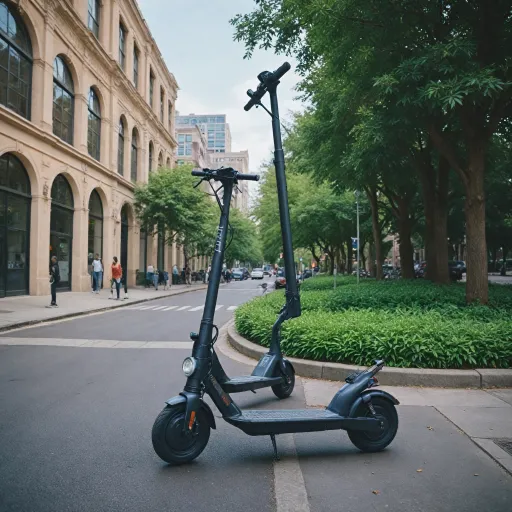
Understanding torque sensors in electric bicycles
How torque sensors work in electric bikes
Torque sensors are a key component in modern electric bikes, especially for those who want a smoother and more natural ride. Unlike basic pedal assist systems, which simply detect if you are pedaling, a torque sensor measures how hard you push on the pedals. This means the motor delivers power based on your effort, creating a seamless connection between you and the bike. The result is a ride that feels much closer to a regular bike, but with the added benefit of electric assist.
Why torque sensors matter for your ride
When you ride an ebike equipped with a torque sensor, you get a more responsive and intuitive experience. The sensor continuously monitors your pedaling force and adjusts the motor power in real time. This helps with smoother acceleration, better control at low speeds, and a more efficient use of battery power. For those who value range miles and want to maximize their ebike's performance, a torque sensor can make a noticeable difference. Many ebikes electric models, including fat tire ebikes and cruiser ebike options, now feature this technology to enhance comfort and control.
Key features to look for in torque sensor ebikes
- Pedal assist: The sensor ensures pedal assist matches your effort, making climbs and long rides easier.
- Motor power: Torque sensors work well with various motor power levels, from city bikes to high-performance fat tire ebikes.
- Range: By delivering power only when needed, these sensors help extend your range miles on a single charge.
- Speed and control: The system provides smoother speed transitions and better control, especially in stop-and-go traffic.
- Payload capacity: Torque sensors can benefit bikes with higher payload capacity, as they adjust power output based on the extra load.
Whether you are comparing ebike reviews or looking for the best sale price during Black Friday, understanding how torque sensors work is a crucial step in choosing the right electric bike. For more details on electric scooter technology and what to know before buying, check out this guide to electric scooter essentials. This knowledge will help you compare different bikes, from step ebike models to the popular Aventon Level, and find the best fit for your needs.
Benefits of electric bicycles with torque sensors
How Torque Sensors Transform Your Ebike Experience
When you ride an electric bike equipped with a torque sensor, the difference is noticeable right away. Instead of a simple on-off feeling, the pedal assist system responds to how hard you push on the pedals. This means the motor delivers power in a way that feels natural and intuitive, making your ride smoother and more enjoyable. Whether you’re on a cruiser ebike or a fat tire model, the torque sensor adapts to your effort, giving you just the right amount of assist.
Key Advantages for Everyday Riders
- Natural Pedal Assist: The motor power adjusts instantly to your pedaling force, so you feel in control at every speed and on every terrain.
- Extended Range Miles: Because the motor only gives as much power as needed, you can often go farther on a single charge compared to bikes with basic cadence sensors.
- Efficient Use of Battery: By matching your effort, torque sensors help conserve battery life, which can be a big factor when comparing ebikes electric options or looking at sale price versus regular price.
- Improved Safety and Comfort: The smoother power delivery reduces sudden surges, making it easier to handle the bike, especially on step ebike models or when carrying a higher payload capacity.
Why It Matters for Different Ebike Styles
Whether you’re considering a fat tire ebike for off-road adventures or a city cruiser for daily commutes, torque sensors enhance the overall ride quality. They’re especially valuable for riders who want a responsive and free-flowing experience, without the jerky feel that can come from less advanced pedal assist systems. Ebike reviews often highlight the difference in ride feel and control, especially when comparing models like the Aventon Level or other popular electric bikes.
Making the Most of Your Investment
Choosing an electric bike with a torque sensor can also impact the long-term value you get from your purchase. Not only does it improve the ride, but it can also help maintain the bike’s components by reducing unnecessary strain on the motor and drivetrain. When you compare ebikes, consider how the sensor technology affects both performance and maintenance needs.
For more tips on selecting the best ebike for your lifestyle, check out this guide on choosing the right electric scooter for college life—many of the same principles apply when evaluating electric bikes for range, power, and comfort.
Comparing torque sensors to cadence sensors
How torque sensors and cadence sensors impact your ride
When choosing an electric bike, understanding the difference between torque sensors and cadence sensors can make a big difference in your riding experience. Both types of sensors play a role in how the motor delivers power, but they do so in distinct ways. Here’s a closer look at how each sensor affects your ride, power delivery, and overall ebike performance.
- Torque sensors measure how hard you are pedaling. The harder you push, the more assist the motor provides. This creates a natural, responsive feel, similar to riding a traditional bike but with added power. Riders often notice smoother acceleration and better control, especially on hills or when carrying a higher payload capacity.
- Cadence sensors detect if you are pedaling, not how hard. Once you start pedaling, the motor kicks in at a preset level, regardless of your effort. This can feel less intuitive, sometimes resulting in a jerky ride or delayed response, especially at lower speeds or when navigating tight turns.
For those looking for a smoother, more controlled ride—especially on fat tire ebikes or cruiser ebikes—torque sensors are often preferred. They help maintain consistent speed and power, which is useful for longer range miles and varying terrain. In contrast, cadence sensors may suit riders who want a more hands-off approach or are looking for a lower sale price or regular price option.
When you compare ebikes electric models, reviews often highlight the difference in pedal assist quality between these sensor types. Torque sensor-equipped bikes generally receive higher ebike reviews for their natural feel and efficient use of battery power, which can extend your range. On the other hand, cadence sensor bikes might offer a higher top speed at a lower price, but may lack the refined ride quality of torque sensor bikes.
If you’re considering your next step ebike or want to compare options for motor power, stroke width, and payload capacity, it’s worth reading a commuter scooter buying guide for additional insights. This can help you make an informed decision based on your preferred ride style, assist level, and budget—whether you’re shopping during Black Friday or browsing bikes on sale.
In general, torque sensors provide a more refined, enjoyable ride for most users, while cadence sensors offer simplicity and affordability. Consider your priorities—be it range, power, or price—when selecting your next electric bike or ebike.
Choosing the right electric bicycle with a torque sensor
Key factors to consider before buying
When choosing an electric bike with a torque sensor, it’s important to look beyond just the motor power or the sale price. The right ebike for you depends on your riding style, terrain, and daily needs. Torque sensors offer a more natural pedal assist, adjusting the power output based on how hard you pedal. This means a smoother ride, especially on hills or when carrying a heavier payload capacity.
- Motor power and range miles: Consider how much assist you need. Higher motor power can help with steep climbs, but may affect range. Check the range miles to ensure it fits your commute or leisure rides.
- Bike type: Fat tire ebikes, cruiser ebikes, and step ebikes each offer different experiences. Fat tire bikes are great for rough terrain, while cruiser ebikes are comfortable for city rides. Step-through frames make it easy to get on and off, especially for those with mobility concerns.
- Assist and speed: Torque sensors provide a responsive pedal assist, making it easier to control your speed. Compare top speed and pedal assist levels to match your preferences.
- Payload capacity: If you plan to carry groceries or gear, check the payload capacity. Some electric bikes are designed for heavier loads without sacrificing performance.
- Price and reviews: Compare regular price and sale price, but also read ebike reviews to understand real-world performance. Look for feedback on the torque sensor’s responsiveness and reliability.
Comparing models and features
With so many electric bikes on the market, it’s helpful to compare features side by side. Some popular models, like the Aventon Level, are known for their efficient torque sensors and balanced ride. Pay attention to details like stroke width, which can affect comfort, and cls fill, which may refer to frame design or finish. Ebikes electric with advanced sensors often deliver a more intuitive ride, especially when navigating varied terrain or adjusting to different speeds.
| Model | Motor Power | Torque Sensor | Range Miles | Payload Capacity | Top Speed | Price |
|---|---|---|---|---|---|---|
| Aventon Level | 500W | Yes | 40 | 300 lbs | 28 mph | $1,799 |
| Fat Tire Ebike | 750W | Yes | 45 | 350 lbs | 25 mph | $1,999 |
| Cruiser Ebike | 500W | Yes | 35 | 250 lbs | 20 mph | $1,499 |
Test rides and after-sale support
Before making a final decision, try to test ride a few bikes. This gives you a feel for the torque sensor’s pedal assist and how the bike handles at different speeds. Also, check for free maintenance or after-sale support, especially during Black Friday or other sale events. Reliable support can make a big difference in your long-term satisfaction with your electric bike.
Maintenance tips for torque sensor-equipped e-bikes
Keeping Your Torque Sensor in Top Shape
Regular care is essential for maintaining the performance and longevity of your ebike’s torque sensor. This component plays a key role in how the motor delivers power and how smooth your ride feels. Here are some practical steps to help you keep your electric bike running efficiently:
- Cleanliness matters: After each ride, especially on fat tire ebikes or cruiser ebike models, gently wipe down the area around the torque sensor. Avoid using high-pressure water, as it can damage sensitive electronics.
- Check connections: Inspect the wiring and connectors near the pedal assist system. Loose or corroded connections can affect sensor accuracy and motor power delivery.
- Monitor performance: If you notice changes in pedal assist responsiveness or a drop in range miles, it could be a sign the sensor needs attention. Compare your experience with ebike reviews to see if others have similar issues.
- Professional servicing: Schedule regular check-ups with a qualified technician, especially if your electric bike is under warranty or if you ride frequently. They can test the torque sensor and ensure it’s calibrated for optimal stroke width and assist levels.
- Firmware updates: Some modern ebikes electric offer free software updates that can improve sensor performance and top speed management. Check your manufacturer’s website or ask your dealer about updates.
Protecting Your Investment
Proper maintenance not only extends the life of your torque sensor but also helps maintain the general value and sale price of your electric bike. Keeping your bike in good shape can also support payload capacity and ensure you get the most out of your motor power and range. For those considering a step ebike or models like the Aventon Level, regular care is especially important to preserve features like pedal assist and tire ebikes performance.
Simple Steps for Everyday Care
- Store your ebike in a dry, sheltered place to prevent moisture damage.
- Check tire pressure and brake function regularly, as these affect overall ride quality and sensor feedback.
- Review your bike’s manual for specific maintenance intervals and recommendations for your torque sensor and related components.
By following these steps, you can enjoy a smoother, more reliable ride and keep your electric bikes performing at their best, whether you’re commuting, exploring, or taking advantage of Black Friday deals on new models.
Common questions about electric bicycles with torque sensors
How does a torque sensor affect the riding experience?
A torque sensor on an electric bike measures how hard you pedal, not just if you are pedaling. This means the motor delivers power in a way that feels more natural and responsive. When you push harder, you get more assist, making the ride smoother and more intuitive compared to bikes with only cadence sensors. Many ebike reviews highlight this as a key advantage for riders who want a seamless pedal assist experience, especially on varied terrain or when carrying extra payload capacity.
Is a torque sensor worth the higher price?
Electric bikes with torque sensors often come at a higher regular price or sale price compared to those with basic cadence sensors. However, the added cost is usually justified by the improved ride quality, better range miles, and more efficient use of motor power. Riders looking for a cruiser ebike, fat tire ebikes, or step ebike models often find the investment worthwhile, especially if they value a bike that adapts to their effort and provides a more engaging ride.
What is the impact on battery range and motor power?
Torque sensors help optimize battery use by delivering only the power you need. This can extend the range miles of your ebike, as the motor is not constantly running at full power. For those comparing ebikes electric options, bikes with torque sensors generally offer better efficiency, which is especially noticeable on longer rides or when using higher assist levels. This efficiency is a key point in many ebike reviews and can be a deciding factor for riders who prioritize range and motor power management.
Are torque sensors compatible with all types of electric bikes?
Torque sensors are found on a wide range of electric bikes, including fat tire, step-through, and cruiser ebike models. However, not every bike comes equipped with one. When you compare bikes, check the specifications for the type of pedal assist system. Some entry-level ebikes may only offer cadence sensors to keep the price lower, while higher-end models and those featured in Black Friday deals often include torque sensors for a premium ride feel.
What maintenance does a torque sensor require?
Maintaining a torque sensor is generally straightforward. Regularly check for firmware updates if your bike offers them, and keep the sensor area clean from dirt and debris. If you notice changes in assist responsiveness or inconsistent power delivery, it may be time for a professional check. Most ebikes electric with torque sensors are designed for durability, but like any component, they benefit from routine inspection, especially after riding in wet or muddy conditions.
Can I retrofit a torque sensor to my current ebike?
Retrofitting a torque sensor to an existing ebike is possible in some cases, but it can be complex and may not be cost-effective. The process often involves replacing the bottom bracket and ensuring compatibility with your motor and controller. For most riders, it’s easier and more reliable to choose a new electric bike that already features a torque sensor, especially if you want to maximize pedal assist performance, top speed, and overall ride quality.
